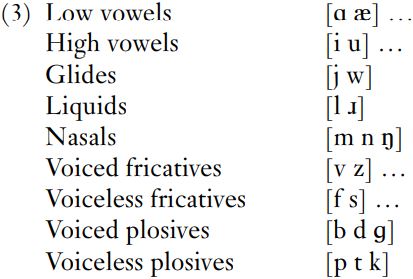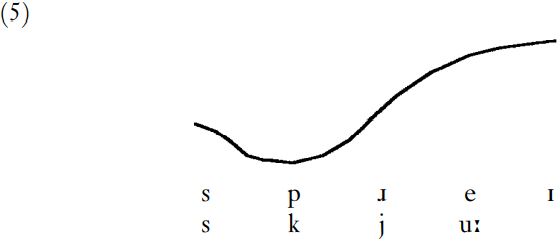

Grammar


Tenses


Present

Present Simple

Present Continuous

Present Perfect

Present Perfect Continuous


Past

Past Simple

Past Continuous

Past Perfect

Past Perfect Continuous


Future

Future Simple

Future Continuous

Future Perfect

Future Perfect Continuous


Parts Of Speech


Nouns

Countable and uncountable nouns

Verbal nouns

Singular and Plural nouns

Proper nouns

Nouns gender

Nouns definition

Concrete nouns

Abstract nouns

Common nouns

Collective nouns

Definition Of Nouns

Animate and Inanimate nouns

Nouns


Verbs

Stative and dynamic verbs

Finite and nonfinite verbs

To be verbs

Transitive and intransitive verbs

Auxiliary verbs

Modal verbs

Regular and irregular verbs

Action verbs

Verbs


Adverbs

Relative adverbs

Interrogative adverbs

Adverbs of time

Adverbs of place

Adverbs of reason

Adverbs of quantity

Adverbs of manner

Adverbs of frequency

Adverbs of affirmation

Adverbs


Adjectives

Quantitative adjective

Proper adjective

Possessive adjective

Numeral adjective

Interrogative adjective

Distributive adjective

Descriptive adjective

Demonstrative adjective


Pronouns

Subject pronoun

Relative pronoun

Reflexive pronoun

Reciprocal pronoun

Possessive pronoun

Personal pronoun

Interrogative pronoun

Indefinite pronoun

Emphatic pronoun

Distributive pronoun

Demonstrative pronoun

Pronouns


Pre Position


Preposition by function

Time preposition

Reason preposition

Possession preposition

Place preposition

Phrases preposition

Origin preposition

Measure preposition

Direction preposition

Contrast preposition

Agent preposition


Preposition by construction

Simple preposition

Phrase preposition

Double preposition

Compound preposition

prepositions


Conjunctions

Subordinating conjunction

Correlative conjunction

Coordinating conjunction

Conjunctive adverbs

conjunctions


Interjections

Express calling interjection

Phrases

Sentences


Grammar Rules

Passive and Active

Preference

Requests and offers

wishes

Be used to

Some and any

Could have done

Describing people

Giving advices

Possession

Comparative and superlative

Giving Reason

Making Suggestions

Apologizing

Forming questions

Since and for

Directions

Obligation

Adverbials

invitation

Articles

Imaginary condition

Zero conditional

First conditional

Second conditional

Third conditional

Reported speech

Demonstratives

Determiners


Linguistics

Phonetics

Phonology

Linguistics fields

Syntax

Morphology

Semantics

pragmatics

History

Writing

Grammar

Phonetics and Phonology

Semiotics


Reading Comprehension

Elementary

Intermediate

Advanced


Teaching Methods

Teaching Strategies

Assessment
The Sonority Sequencing Generalization
المؤلف:
April Mc Mahon
المصدر:
An introduction of English phonology
الجزء والصفحة:
107-9
21-3-2022
4459
The Sonority Sequencing Generalization
However, some other restrictions on possible clusters are not specific to English, but rather reflect universal prohibitions or requirements. The most notable phonological principle which comes into play here is known as the Sonority Sequencing Generalization, and governs the shape of both onsets and codas. Sonority is related to the difference between sonorants (sounds which are typically voiced, like approximants, nasal stops and vowels) and obstruents (oral stops and fricatives, which may be either voiced or voiceless). Sonorants are more sonorous; that is, their acoustic properties give them greater carrying power. If you stood at the front of a large room and said one sound as clearly as you could, a listener at the back would be much more likely to be able to identify a highly sonorous sound like [ɑ] than a sound at the other end of the sonority range, such as [t].
Our knowledge of acoustic phonetics and other aspects of sound behavior can be combined to produce a sonority scale like the one given in (3). Here, the most sonorous sounds appear at the top, and the least sonorous at the bottom. Some English examples are given for each category.

Natural classes of sounds which function together in phonological processes are often composed of single or adjacent levels on the sonority hierarchy. For instance, English liquids and nasals can be syllabic, and these are the closest consonants to the vowel series (with the exception of the glides; and as we have seen already, we might say that [j w] do have syllabic counterparts, namely the high vowels).
The general rule expressed by the Sonority Sequencing Generalization is that syllables should show the sonority curve in (4).

The nucleus constitutes the sonority peak of the syllable, with sonority decreasing gradually towards the margins. In syllables like trump, prance, plant, the outermost consonants, at the beginning of the onset and the end of the coda, are at the bottom end of the sonority scale, while less marginal consonants, adjacent to the vowel, are also closer to the vowel in their sonority value. Lack of adherence to the Sonority Sequencing Generalization therefore rules out onsets like *[lp], *[jm], *[ɹg], although onsets with the same segments in the opposite order are found in play, muse, grey. Similarly, universal sonority restrictions mean English lacks *[pm], *[kl], *[mr] codas, although again clusters with the opposite order, which do show descending sonority, are attested in lamp, silk, harm (the last in rhotic accents only).
Like many rules, the Sonority Sequencing Generalization has an exception, and this involves the behavior of /s/. The onset clusters in spray, skew have the sonority profile in (5)

That is, the marginal consonant [s] has a higher sonority value than the adjacent voiceless plosive: yet there is no question of drawing a syllable boundary here and recognizing two syllables within the same word, as [s] is not one of the English consonants which can become nuclear, or syllabic. The same problem arises in codas. We would normally use a sonority pattern like the one in (6a) to tell us that a syllable division should be made, giving two syllables in little, but one in lilt. However, codas with both orders of clusters involving [s] are possible, as in apse and asp, or axe and ask; and the same sonority pattern in (6b) must be analyzed, contrary to the Sonority Sequencing Generalization, as corresponding to a single syllable.

These exceptions are at least not random: cross-linguistically, violations of the Sonority Sequencing Generalization always seem to involve coronal consonants (those produced using the tongue tip or blade, and typically alveolars), and especially /s/. Such consonants seem to behave exceptionally in a number of ways, and have to be excluded from various phonological generalizations, though it is not yet quite clear why.
 الاكثر قراءة في Phonology
الاكثر قراءة في Phonology
 اخر الاخبار
اخر الاخبار
اخبار العتبة العباسية المقدسة

الآخبار الصحية















 قسم الشؤون الفكرية يصدر كتاباً يوثق تاريخ السدانة في العتبة العباسية المقدسة
قسم الشؤون الفكرية يصدر كتاباً يوثق تاريخ السدانة في العتبة العباسية المقدسة "المهمة".. إصدار قصصي يوثّق القصص الفائزة في مسابقة فتوى الدفاع المقدسة للقصة القصيرة
"المهمة".. إصدار قصصي يوثّق القصص الفائزة في مسابقة فتوى الدفاع المقدسة للقصة القصيرة (نوافذ).. إصدار أدبي يوثق القصص الفائزة في مسابقة الإمام العسكري (عليه السلام)
(نوافذ).. إصدار أدبي يوثق القصص الفائزة في مسابقة الإمام العسكري (عليه السلام)


















